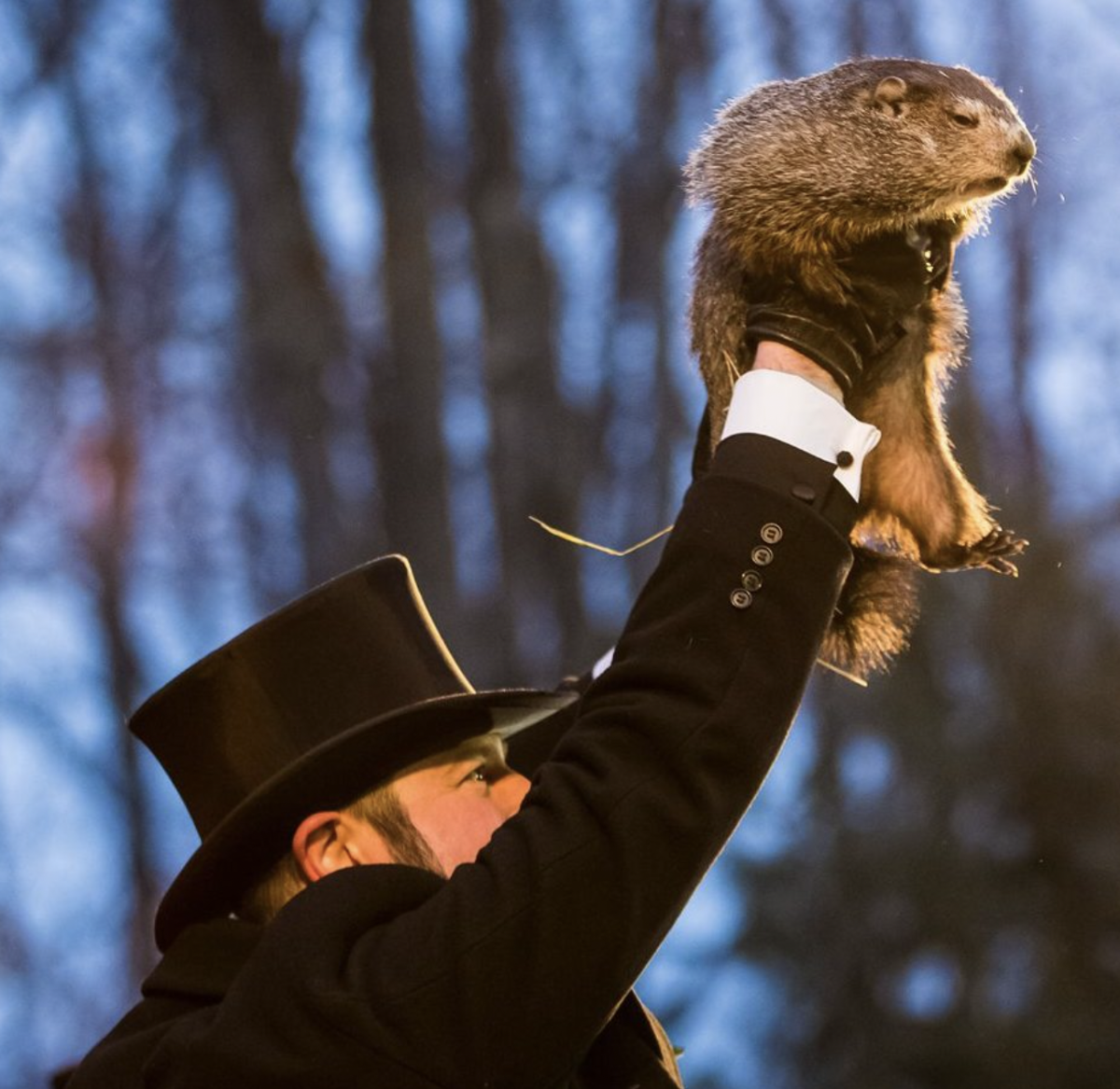Every year, on Feb. 2, a furry rodent crawls out of his den to the bated breath of thousands of people, ready to predict the upcoming weather. His name is Punxsutawney Phil, and according to legend, this same groundhog has been predicting the weather since the 1800s. By now, most know the tale; if Phil casts a shadow, he will predict an extra six weeks of winter and, if not, an early spring is on the way. Besides the more well-known aspects of the legend, the lore of Punxsutawney Phil is actually more profound and more detailed, if not somewhat questionable.
The Punxsutawney Groundhog Club, an organization dedicated to “protect[ing] and perpetuat[ing] the legend” of Phil, claims the very same groundhog has been making weather predictions for 138 years. Legend claims he has lived this long by drinking an “elixir of life” every year that extends his lifespan by seven years. The tale also goes that he has never had any children but does have a wife, Phyliss. Unfortunately for Phyliss, she doesn’t receive the elixir of life so she will die someday. But perhaps the most applicable part of Phil’s tall tale is the claim that the rodent is accurate “100% of the time” with his weather predictions. While it would be difficult to prove or disprove most of the Groundhog Club’s claims about Phil’s personal life, his accuracy should be easy to dispute, given the objectivity of numbers.
As it turns out, betting on Punxsutawney Phil’s accuracy typically doesn’t end well. According to the Stormfax Almanac’s data, Phil has been right 39% of the time. A more recent study conducted by the National Oceanic and Atmospheric Administration (NOAA) from 2012 through 2021 shows a similar trend, with Phil’s accuracy rate at just 40%. However, this year, Phil appears to be correct. In Potomac, a prediction of an early spring was followed by a brief dip in temperature on February 7th, reaching as low as 30 degrees Fahrenheit, before sharply rebounding to a high of 63 degrees on February 9th through 10th. Average temperatures in Potomac are higher than on Groundhog Day and only show signs of rising. In Punxsutawney Penn., Phil’s home, the data follows a similar pattern: a dip in the first few days following Groundhog Day before a steady rise to a high of 61 degrees on February 9th. Yet, in Punxsutawney, the average temperature today appears to be lower than it was on Groundhog Day, indicating that Pennsylvania’s northern position with respect to Maryland likely contributes to the weather trends.
“Getting spring now seems accurate, given the warmer weather and the lack of need to wear a jacket when I go outside” WCHS computer science teacher and Pennsylvanian Dylan Antonucci said.
At this point, the legend and the tradition of Punxsutawney Phil seem rather concrete. It seems as if nothing could shift America’s favorite groundhog from his day in the spotlight. But People for the Ethical Treatment of Animals (PETA) is trying to do just that. On a petition with over 56,000 signatories, PETA claims that groundhogs are “shy, solitary animals” who “don’t want to be used to predict the weather.” The animal rights group and their supporters believe that using Phil for his annual weather duty constitutes animal abuse, and advocate for replacing the historic ceremony with a giant coin toss.
While it is bold of PETA to claim to understand the emotions of rodents, the fact of the matter is that PETA has yet to produce concrete evidence that the groundhog is being mistreated. Rather, most of the evidence reflects the opposite. Punxsutawney Phil is at this point a domesticated animal, and contrary to PETA’s reasoning, he and his wife would not be able to thrive in the wilderness. Yet, while PETA currently runs on baseless claims, some would support the initiative, should the argument be less vague.
“If PETA can present data that the groundhog is receiving physical and mental harm, I would be more inclined to support this change,” Antonucci said.
Then again, perhaps all the groundhog stuff is not of such cultural importance as it is made out to be. Throughout WCHS and the nation as a whole, indifference can be seen as many people begin to question the point of it all. Perhaps analyzing the weather to determine the accuracy rate of a mostly incorrect furry rodent is not the best use of one’s time, nor is reading a full article on it. Some people do care very much about Punxsutawney Phil, traveling across the nation to see him. But it is a worthy note that less and less people even bother to look him up on Groundhog Day.
“I used to care more about Groundhog Day as a child,” WCHS senior Zoey Tahardi said. “But, as I’ve grown up, [fewer] people around me care.”









